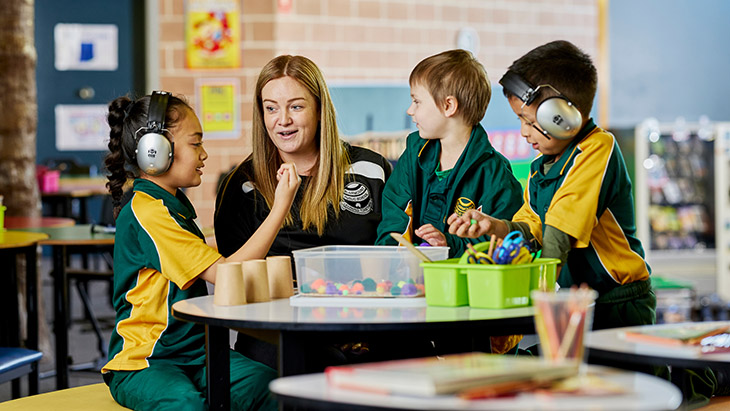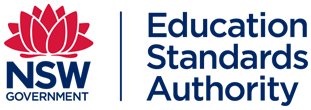NESA - Collaborative curriculum planning
What is collaborative curriculum planning?
Collaborative curriculum planning is the process to determine the most appropriate curriculum options and adjustments for a student with disability.
Collaborative curriculum planning should take place within the broader context of personalised planning that includes interventions and other supports to address identified student learning and support needs.
This involves a team who has significant knowledge and understanding of the student. The team comprises parents/carers, teachers and other significant individuals in the student’s life. It also includes the student themselves.
What is decided through collaborative curriculum planning?
During collaborative curriculum planning, it is important to consider:
- the needs, strengths, goals, interests and prior learning of the student as they transition through stages of schooling
- whether adjustments are needed for teaching, learning and assessment in relation to each subject
- the sequence and emphasis to be given to particular areas of syllabus content
- how the student will demonstrate achievement of outcomes and the method of reporting.
Through collaborative curriculum planning, the following can be determined:
- Outcomes and content most appropriate for the student in each key learning area. For example, it may be more appropriate for a Stage 2 student to work on one or more Stage 1 outcomes in the English KLA. Or, a student in Stage 4 may work on one or more Stage 3 outcomes in the Mathematics KLA. It is important to ensure age-appropriate content addresses the outcomes of earlier stages.
- Adjustments or support required for particular teaching, learning and assessment opportunities. For example, scaffolds or visual organisers may be needed to supplement multi-step or complex instructions.
- Learning goals for the student. For example, incorporating communication goals into a problem-solving task in a Mathematics lesson.
- Pattern of study most appropriate for the student. For example, selecting a combination of regular and Life Skills courses (Years 7–12).
Make decisions about the most appropriate curriculum options for a student with disability using the following diagrams.
How should collaborative curriculum planning take place?
Collaborative curriculum planning is best undertaken as part of a broader personalised planning context for students with disability.
Personalised planning for students with disability is best supported by a process that involves the following four key actions: gather information, meet and discuss, plan and implement and monitor and review.
Gather information
Get to know the student and consider their background, strengths, interests and learning and support needs. Gather information about their previous and current capabilities, for example:
- previous student plans or profiles
- assessment and diagnostic data
- knowledge of the student from their parents and/or carers
- medical and health care reports
- work samples and observations
- conversations with the student.
Plan and implement
Select and confirm the options, adjustments, interventions or any other supports that will address the specific needs of the student.
Document the agreed decisions made during collaborative discussions through a personalised student plan.
Identify any specific resources including training and/or equipment that may be required. Personalised student plans may relate to one or more of the following aspects:
- curriculum, learning and/or assessment
- communication
- social and/or emotional health
- attendance
- behaviour
- transition
- mobility and/or accessibility
- health and/or personal care
- sensory needs.
Meet and discuss
Make time for the team to meet and engage in open, collaborative discussions about the student’s long term goals. Analyse information gathered and seek to gain a mutual understanding of the adjustments or support required to meet the specific needs of the student.
Respectful acknowledgment of the expertise of all stakeholders will encourage ongoing communication. Questions to consider during this stage may include:
- what are the long term goals of the student and what resources and support is needed?
- what curriculum pathway will best meet the needs of the student?
- what adjustments are required to teaching, learning and assessment activities?
Monitor and review
Establish a process and a timeframe for the monitoring and review of planning decisions.
Ongoing consultation may be required to evaluate the effectiveness of adjustments and supports and whether they continue to meet the identified needs of the student.
The use of data to inform student progress will help the team to consider if any new or additional supports are required.

Who is responsible for managing collaborative curriculum planning?
Individual schools are responsible for managing collaborative curriculum planning in line with wider school system and sector policies. Schools do not need to send planning documentation to NESA.
Schools may also find the advice on planning for effective learning and assessment helpful during this process.
This resource has been provided by NSW Education Standards Authority (NESA) who work with the NSW community to drive improvements in student achievement. You can find further information, news and updates on the NESA website.
© 2021 NSW Education Standards Authority for and on behalf of the Crown in right of the State of New South Wales.

Explore other topics
1/4